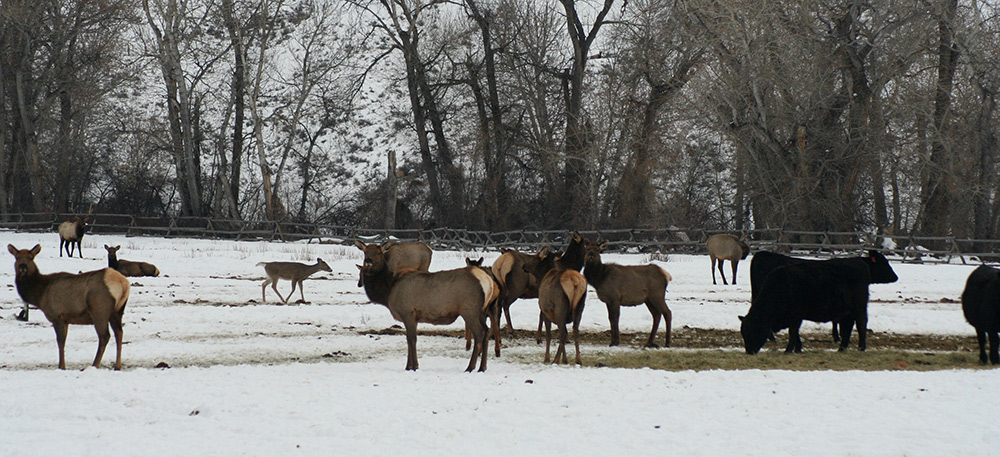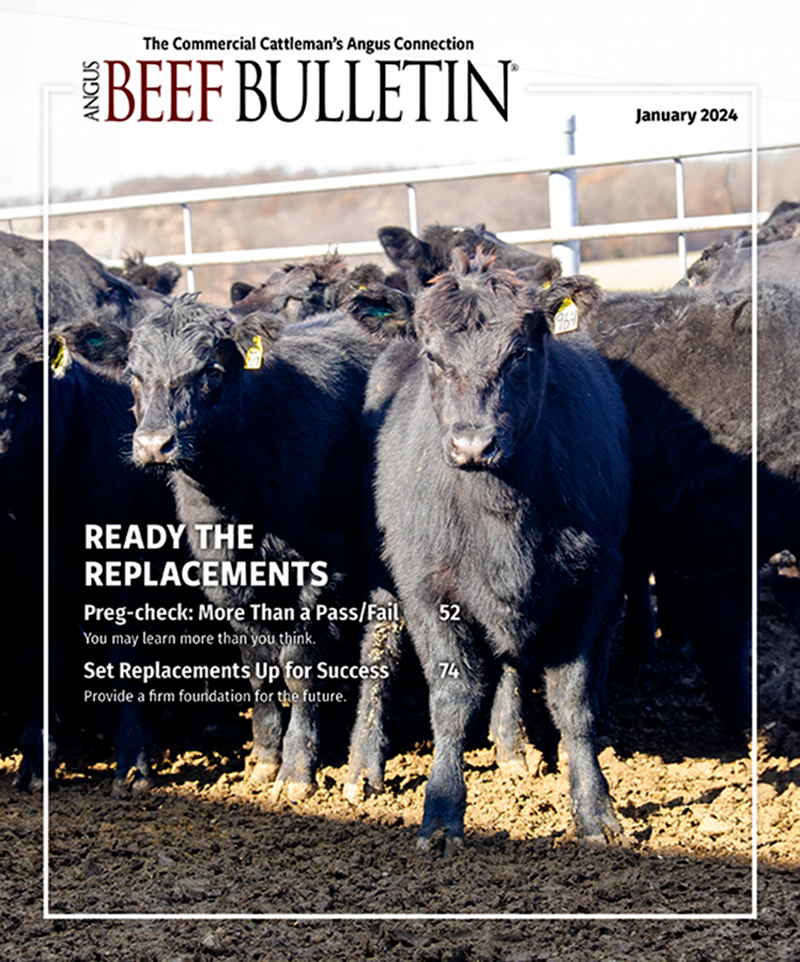
There are several lab tests that can be done to diagnose the reason a cow is open.
Many Reasons for Open Cows
Diseases to test for when cows come in open.
Producers and veterinarians in some regions are seeing more open cows than usual this fall. Dave Barz, Northwest Veterinary and Supply, Parkston, S.D., says some of the reason is nutritional, and some may be due to diseases.
“We’ve been running diagnostics on a lot of open cows here and finding some neospora, a protozoal parasite,” he says. “Here in eastern South Dakota, farmers have silage piles, hay piles, etc., and raccoons and other animals eat on those and shed the protozoa.”
He notes that in his area, coyote populations are up, and they can also spread neospora. In pastures with coyote dens, he’s found at least 10% more open cows, and the cows test positive for neospora. The canine or scavenger animal is part of the life cycle of this parasite, shedding protozoa in feces to contaminate feed and pasture, which are then ingested by the grazing animal.
Hemorrhagic disease in deer is another regional problem. This is caused by a virus. Barz says there are areas where the deer population is depleted due to this disease.
“On blood tests for some of the open cows, we are finding this virus, and this may be why they are open,” he says. “If cows have antibodies to this virus, this means they’ve been exposed.”
Bovine viral diarrhea (BVD) is sometimes a factor in poor reproduction, as well. Barz explains that we can test for most of these diseases. Iowa State University does tests for the deer disease, and today there are some autogenous vaccines made for it. Some producers are starting to use those vaccines.
This summer there was an outbreak of anaplasmosis in South Dakota. “It’s become common here, because we are no longer isolated,” Barz says.
This disease can travel thousands of miles with carrier cows or in ticks on cows coming from regions where this disease is endemic.
“In our area there are a lot of what we call flip cows. You buy a pregnant cow, calve her out, then flip her — sell her to someone else or take her to the sale. With drought in the South, a lot of Southern cows move up here,” he says.
A few years ago, Barz recalls thinking they didn’t have anaplasmosis in the state — but it was already there. This disease in early stages can be controlled with proper treatment, but there may be some chronic infections that catch people by surprise, he says.
It used to be Leptospira hardjo-bovis that was causing abortions. There are now vaccines for this, but it’s a hard one to diagnose and is carried in deer.
“Some of the places we had problems were areas with dugouts, and the deer were coming in to drink and urinating in the water,” says Barz.
“I work with a feedlot owner who sells cattle to a feedlot in Nebraska, where they are starting to see Lepto problems coming back and now request that we use a five-way Lepto vaccine,” he says. “This disease is still important; we thought we’d resolved it by vaccinating, but it’s still there. These diseases seem to go in cycles.”
Diagnosing a problem
Most abortions go undiagnosed. If cattle are in big pastures, you might not see it. With an early pregnancy loss, there’s nothing to see; those cows just come up open at preg-check time.
“If you have a fetus or a blood sample from the cow, it makes a difference where you send it. All diagnostic labs are not equal,” Barz warns. “Forty or 50 years ago, if you wanted an IBR (infectious bovine rhinotracheitis) diagnosis for abortions, you sent the samples to SDSU (South Dakota State University) because the pathologist there was a specialist. Today, some of the BVD specialists are at SDSU. But if you want a diagnosis for neospora, you send it to the Iowa State University lab.”
Producers who are seeing unusual things or more open cows need to work with their veterinarian, who might be able to determine the cause or point them toward someone who can. Diagnostic capabilities keep improving.
“With the tests we have now, we can pick up the proteins from a virus in a fetus or a blood sample. The lab doesn’t have to grow it,” he explains. Diagnosis is easier and better. The pathogen can be found, and this takes the guesswork out of it.
With an accurate diagnosis, the veterinarian and producer can make a plan to try to reduce problems instead of shooting in the dark with a shotgun approach.
Editor’s note: Heather Smith Thomas is a freelance writer and cattlewoman from Salmon, Idaho.



